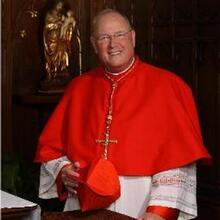For many families, the end of summer means back-to-school. We praise God for our Catholic grade schools, high schools, colleges and religious formation programs that instruct so many of our young people. The direction of and stewardship of these institutions is a sacred trust handed to us by our forefathers in the faith who heeded Jesus’ command to go ad gentes, “to the nations of the earth” to preach the Gospel to all peoples and to strengthen the faith.
But also within our obedience to the last command of Jesus “to teach the nations” would be our seminaries. To provide quality formation—human, academic, spiritual and pastoral—to our future priests is a sacred duty for me as a diocesan bishop, supported by my priests and people.
I often ask myself, do we have too many seminaries? To that I must answer with a resounding yes!
All our other educational institutions, as well as parishes, are biting the bullet. It is time we in charge of seminaries do the same thing.
They are all good, to be sure. Yet, I conclude we would be better off if we had fewer good ones and instead had truly excellent ones.
I speak from experience. Here in the Archdiocese of New York we have a very good major seminary, St. Joseph’s. Yet, we struggle with enrollment, finances, maintenance of huge buildings and finding more and new quality faculty, especially priests.
This archdiocese, along with our neighbors, the Dioceses of Brooklyn and Rockville Centre, pooled our resources a dozen years ago, uniting into one major seminary (instead of the two we had) and one college seminary for men studying for their undergraduate degree (instead of two). This year, we closed the college, and sent our men to St. Andrew’s across the Hudson in Newark, up the Acela line to Our Lady of Providence College Seminary in Providence, R.I., and down the train tracks to Washington, D.C. We bishops are glad we did.
That story could be repeated in many places around the United States, where bishops have realized it is neither financially feasible nor pastorally sensible for each diocese to have its own seminary.
But more such strategic decisions need to be made. Up and down the East Coast, from Boston to D.C., you find eight theologates. In Ohio, three major seminaries are within three hours apart. They’re all good, but often all have plenty of room, not enough money, buildings that need repair and dozens of excellent priests on the faculty who are sorely needed in parishes. Is this the best stewardship of our limited resources, especially when it comes to developing the gifts of our future priests? Not only that, but two-thirds of our seminaries nationally are in the Northeastern quadrant of our country, with only 20 percent in the South and West, where, by the way, the Catholic population is growing, and vocations to the priesthood and religious life are higher.
The question I ask is not a new one. A decade and a half ago, the Holy See, after an apostolic visitation of our seminaries, told us we had too many seminaries. The recent fine new biography of the acclaimed American Catholic historian, Msgr. John Tracy Ellis, by Msgr. Thomas Shelley, notes that Ellis advocated for fewer seminaries seven decades ago. Monsignor Ellis, who had spent years working at very small Catholic colleges and universities that struggled to attract students and stay afloat financially, thought it would be much better if there were fewer Catholic institutes of higher education, so that the church might be better served by a few well-financed, first-rate institutions.
Some thoughtful observers have proposed we consider regional major seminaries, one for each of four or five geographic areas in the U.S. church.
Rare would be the bishop who has not had to make heartburn-inducing choices about closing or merging beloved parishes and schools. How can we not apply the same criteria we did for those tough decisions to the bloated number of seminaries we have? While every priest—bishops included—surely has fond memories of the seminaries he himself attended (I certainly have many happy memories of my own), we also have a responsibility to current and future generations to offer our seminarians a first-rate education before they enter full-time ministry.
A year and a half ago, those tasked with the oversight of the eight seminaries along the East Coast from Boston to D.C. met, and each bishop and rector agreed with all of this. Each bishop and rector admitted that realistically we need to close some…as long as it’s not mine!
What would a consolidation of our seminaries look like? Certainly we must begin with a period of careful discussion and discernment. Some thoughtful observers have proposed we consider regional major seminaries, one for each of four or five geographic areas in the U.S. church. With funding and staff provided by all the area dioceses, such institutions could become educational and pastoral centers without peer. Obviously religious orders might have their own formation programs, and we would also perhaps need to continue to offer a seminary for delayed vocations. Not that we need to open new ones, but rather utilize existing institutions in a creative, bold, daring way.
All our other educational institutions, as well as parishes, are biting the bullet. It is time we in charge of seminaries do the same thing. The fact is, we’ll then have fewer seminaries but much better ones. Let’s “cast out to the deep,” and “be not afraid.”




